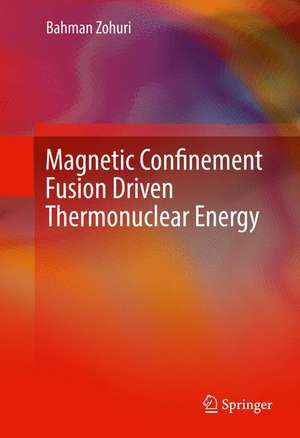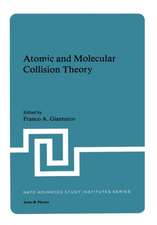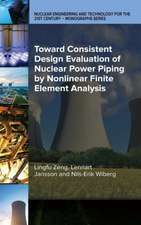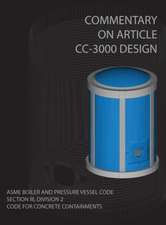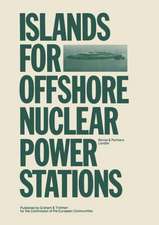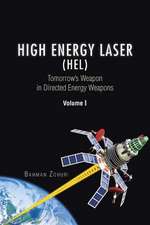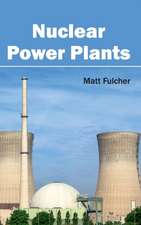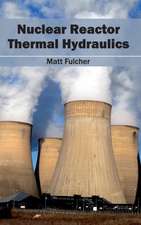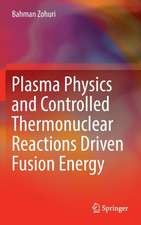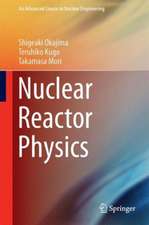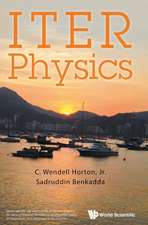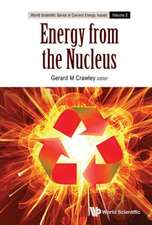Magnetic Confinement Fusion Driven Thermonuclear Energy
Autor Bahman Zohurien Limba Engleză Hardback – 6 mar 2017
| Toate formatele și edițiile | Preț | Express |
|---|---|---|
| Paperback (1) | 776.72 lei 6-8 săpt. | |
| Springer International Publishing – 18 iul 2018 | 776.72 lei 6-8 săpt. | |
| Hardback (1) | 782.72 lei 6-8 săpt. | |
| Springer International Publishing – 6 mar 2017 | 782.72 lei 6-8 săpt. |
Preț: 782.72 lei
Preț vechi: 954.54 lei
-18% Nou
Puncte Express: 1174
Preț estimativ în valută:
149.77€ • 156.79$ • 123.93£
149.77€ • 156.79$ • 123.93£
Carte tipărită la comandă
Livrare economică 05-19 aprilie
Preluare comenzi: 021 569.72.76
Specificații
ISBN-13: 9783319511764
ISBN-10: 3319511769
Pagini: 185
Ilustrații: XVI, 185 p. 92 illus., 36 illus. in color.
Dimensiuni: 155 x 235 x 13 mm
Greutate: 0.46 kg
Ediția:1st ed. 2017
Editura: Springer International Publishing
Colecția Springer
Locul publicării:Cham, Switzerland
ISBN-10: 3319511769
Pagini: 185
Ilustrații: XVI, 185 p. 92 illus., 36 illus. in color.
Dimensiuni: 155 x 235 x 13 mm
Greutate: 0.46 kg
Ediția:1st ed. 2017
Editura: Springer International Publishing
Colecția Springer
Locul publicării:Cham, Switzerland
Cuprins
Foundation of Electromagnetic Theory.- Principles of Plasma Physics.- Confinement Systems for Controlled Thermonuclear Fusion.- Index.
Notă biografică
Dr. Bahman Zohuri currently works for Galaxy Advanced Engineering, Inc., a consulting firm that he started in 1991 when he left both the semiconductor and defense industries after many years working as a chief scientist. After graduating from the University of Illinois in the field of physics, applied mathematics, then he went to the University of New Mexico, where he studied nuclear engineering and mechanical engineering. He joined Westinghouse Electric Corporation, where he performed thermal hydraulic analysis and studied natural circulation in an inherent shutdown, heat removal system (ISHRS) in the core of a liquid metal fast breeder reactor (LMFBR) as a secondary fully inherent shutdown system for secondary loop heat exchange. All these designs were used in nuclear safety and reliability engineering for a self-actuated shutdown system. He designed a mercury heat pipe and electromagnetic pumps for large pool concepts of a LMFBR for heat rejection purposes for this reactoraround 1978, when he received a patent for it. He was subsequently, transferred to the defense division of Westinghouse, where he oversaw dynamic analysis and methods of launching and controlling MX missiles from canisters. The results were applied to MX launch seal performance and muzzle blast phenomena analysis (i.e., missile vibration and hydrodynamic shock formation). Dr. Zohuri was also involved in analytical calculations and computations in the study of nonlinear ion waves in rarefying plasma. The results were applied to the propagation of so-called soliton waves and the resulting charge collector traces in the rarefaction characterization of the corona of laser-irradiated target pellets. As part of his graduate research work at Argonne National Laboratory, he performed computations and programming of multi-exchange integrals in surface physics and solid-state physics. He earned various patents in areas such as diffusion processes and diffusion furnace design while working as asenior process engineer at various semiconductor companies, such as Intel Corp., Varian Medical Systems, and National Semiconductor Corporation. He later joined Lockheed Martin Missile and Aerospace Corporation as Senior Chief Scientist and oversaw research and development (R&D) and the study of the vulnerability, survivability, and both radiation and laser hardening of different components of the Strategic Defense Initiative, known as Star Wars.
This included payloads (i.e., IR sensor) for the Defense Support Program, the Boost Surveillance and Tracking System, and Space Surveillance and Tracking Satellite against laser and nuclear threats. While at Lockheed Martin, he also performed analyses of laser beam characteristics and nuclear radiation interactions with materials, transient radiation effects in electronics, electromagnetic pulses, system-generated electromagnetic pulses, single-event upset, blast, thermo-mechanical, hardness assurance, maintenance, and device technology. He spent several years as a consultant at Galaxy Advanced Engineering serving Sandia National Laboratories, where he supported the development of operational hazard assessments for the Air Force Safety Center in collaboration with other researchers and third parties. Ultimately, the results were included in Air Force Instructions issued specifically for directed energy weapons operational safety. He completed the first version of a comprehensive library of detailed laser tools for airborne lasers, advanced tactical lasers, tactical high-energy lasers, and mobile/ tactical high-energy lasers, for example.
He also oversaw SDI computer programs, in connection with Battle Management C3I and artificial intelligence, and autonomous systems. He is the author of several publications and holds several patents, such as for a laser-activated radioactive decay and results of a through-bulkhead initiator. He has published the following works: HeatPipe Design and Technology: A Practical Approach (CRC Press); Dimensional Analysis and Self-Similarity Methods for Engineering and Scientists (Springer); High Energy Laser (HEL): Tomorrow’s Weapon in Directed Energy Weapons Volume I (Trafford Publishing Company); and recently the book on the subject Directed Energy Weapons and Physics of High Energy Laser with Springer. He has other books with Springer Publishing Company; Thermodynamics in Nuclear Power Plant Systems (Springer); and Thermal-Hydraulic Analysis of Nuclear Reactors (Springer).
This included payloads (i.e., IR sensor) for the Defense Support Program, the Boost Surveillance and Tracking System, and Space Surveillance and Tracking Satellite against laser and nuclear threats. While at Lockheed Martin, he also performed analyses of laser beam characteristics and nuclear radiation interactions with materials, transient radiation effects in electronics, electromagnetic pulses, system-generated electromagnetic pulses, single-event upset, blast, thermo-mechanical, hardness assurance, maintenance, and device technology. He spent several years as a consultant at Galaxy Advanced Engineering serving Sandia National Laboratories, where he supported the development of operational hazard assessments for the Air Force Safety Center in collaboration with other researchers and third parties. Ultimately, the results were included in Air Force Instructions issued specifically for directed energy weapons operational safety. He completed the first version of a comprehensive library of detailed laser tools for airborne lasers, advanced tactical lasers, tactical high-energy lasers, and mobile/ tactical high-energy lasers, for example.
He also oversaw SDI computer programs, in connection with Battle Management C3I and artificial intelligence, and autonomous systems. He is the author of several publications and holds several patents, such as for a laser-activated radioactive decay and results of a through-bulkhead initiator. He has published the following works: HeatPipe Design and Technology: A Practical Approach (CRC Press); Dimensional Analysis and Self-Similarity Methods for Engineering and Scientists (Springer); High Energy Laser (HEL): Tomorrow’s Weapon in Directed Energy Weapons Volume I (Trafford Publishing Company); and recently the book on the subject Directed Energy Weapons and Physics of High Energy Laser with Springer. He has other books with Springer Publishing Company; Thermodynamics in Nuclear Power Plant Systems (Springer); and Thermal-Hydraulic Analysis of Nuclear Reactors (Springer).
Textul de pe ultima copertă
This book covers the principles and practices behind the Magnetic Confinement Fusion (MCF) approach to driven new source of energy. All possible technical methods, including well established theoretical research, as well as findings tested in an experimental tokamak reactor, are examined in order to determine how to best achieve breakeven via this pathway to plasma-driven fusion. The author undertakes a life cycle analysis to compare and contrast the efficiency, environmental impacts, and operating costs of plasma-driven MCF fusion against other forms of energy generation currently in widespread use. The associated computer code and numerical analysis are included in the book. No prior knowledge of MCF and no more than basic background in plasma physics is required.
- Provides an updated approach to Magnetic Confinement Fusion
- Includes Life Cycle Analysis, weighing the efficiency of plasma-driven fusion against other energy technologies
- Tackles the specific challenges that have hindered commercial implementation
Caracteristici
Provides an updated approach to Magnetic Confinement Fusion Includes Life Cycle Analysis, weighing the efficiency of plasma-driven fusion against other energy technologies Tackles the specific challenges that have hindered commercial implementation Includes supplementary material: sn.pub/extras
